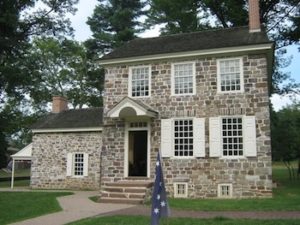
*On this date in 2010, the George Washington House in Philadelphia opened to the public. This was the historic home of America’s first president, who was a slave owner.
On June 7, 2007, Archaeologists unearthed the remains of George Washington's presidential home and discovered a hidden passageway used by his nine slaves. The discovery at the first president's Philadelphia home raised questions about whether the ruins should be incorporated into a new exhibit at the site. The underground passageway is just steps from the Liberty Bell and Independence Hall.
It was designed so Washington's guests would not see slaves as they slipped in and out of the main house. "As you enter the heaven of liberty, you have to cross the hell of slavery," said Michael Coard, a Philadelphia attorney who leads a group that worked to have slavery recognized at the site. "That's the contrast, that's the contradiction, that's the hypocrisy. But that's also the truth."
Washington lived and handled presidential business at the house in the 1790s when Philadelphia was the nation's capital. The findings have created a quandary for the National Park Service and city officials planning an exhibit at the house. They are now trying to decide whether to incorporate the remains into the exhibit or plan to fill in the ruins and build an abstract display about life in the house.
Making that decision will push back the exhibit building, which had been slated to open in 2009. Joyce Wilkerson, the mayor's chief of staff, said the oversight committee wouldn’t rush into construction. Most of Washington's slaves lived at his Mount Vernon estate in Virginia. When Washington died in 1799, he had more than 300 slaves. In his will, he arranged for them to be freed after his wife's death. Before the ruins were unearthed, officials had planned an exhibit without archaeological findings.
The planned design included a framework of the house, LED screens, and other audiovisual elements explaining its history, including stories of Washington's slaves. The remains would crumble if left unprotected. Costs would increase significantly if the design included elevators, ramps, or stairs to move visitors down into the newly dug ruins. David Orr, an anthropology professor at Temple University, has visited the site at least four times. He posted a note on the President's House website urging officials to keep the ruins on display. "It's just fantastic," Orr said. "I can't tell you enough how exciting it is. For years and years and years, I've been trying to promote that kind of public archaeology."